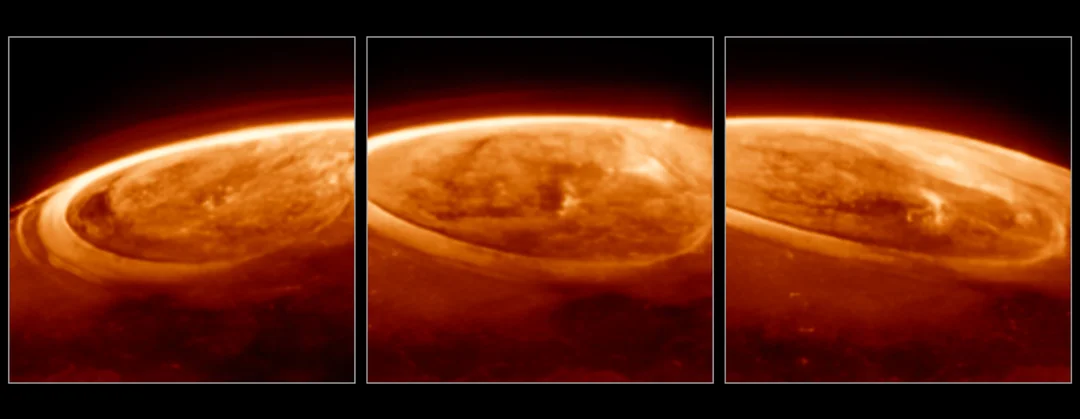
James Webb Telescope Unveils Jupiter’s Auroras: A Cosmic Light Show Beyond Our Wildest Expectations
Prepare to be dazzled! NASA's James Webb Space Telescope (JWST) has captured unprecedented images of Jupiter's auroras, revealing a light show so intense and dynamic that it has astronomers questioning everything they thought they knew about the giant planet's magnetosphere. These auroras, hundreds of times brighter than those on Earth, are not just a beautiful spectacle; they're a cosmic puzzle.

Led by Jonathan Nichols at the University of Leicester, the research team made these captivating observations on Christmas Day 2023, utilizing Webb's Near-Infrared Camera (NIRCam). Nichols described the experience as a mind-blowing "Christmas present," stating, "We wanted to see how quickly the auroras change…instead, we observed the whole auroral region fizzing and popping with light, sometimes varying by the second."
Why are Jupiter's auroras so powerful? The answer lies in a combination of factors. Like Earth, Jupiter's auroras are fueled by charged particles ejected from the Sun during solar storms. However, Jupiter also has an additional, potent source: the volcanic moon Io. Io's eruptions send vast amounts of charged particles into space, which are then captured by Jupiter's powerful magnetic field, accelerating them to tremendous speeds. When these particles collide with Jupiter's atmosphere, they unleash auroras far exceeding the intensity of Earth's Northern and Southern Lights.
But the Webb telescope's observations have revealed a fascinating mystery. Simultaneous observations taken by the Hubble Space Telescope in ultraviolet wavelengths failed to capture the same bright flashes seen by Webb's NIRCam. "Bizarrely, the brightest light observed by Webb had no real counterpart in Hubble’s pictures," Nichols explained. "This has left us scratching our heads."
This discrepancy suggests that the auroral activity requires a combination of large quantities of very low-energy particles hitting the atmosphere, a phenomenon previously considered impossible.

The team hopes that further observations, combined with data from NASA's Juno spacecraft, which is currently orbiting Jupiter, will shed light on this perplexing anomaly and deepen our understanding of Jupiter's magnetosphere and its interaction with the surrounding space environment. The team's findings were published in the journal Nature Communications.
The discovery underscores the power of the James Webb Space Telescope in unraveling the secrets of our solar system and beyond. What other cosmic surprises await us as Webb continues to explore the universe? Share your thoughts and theories in the comments below!